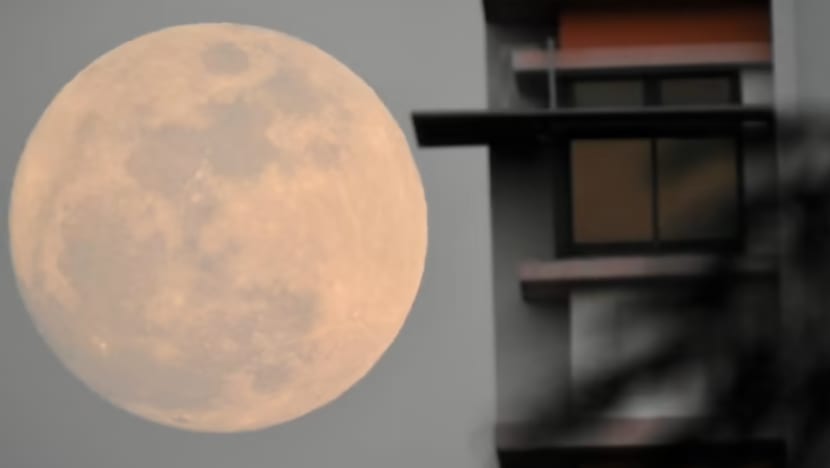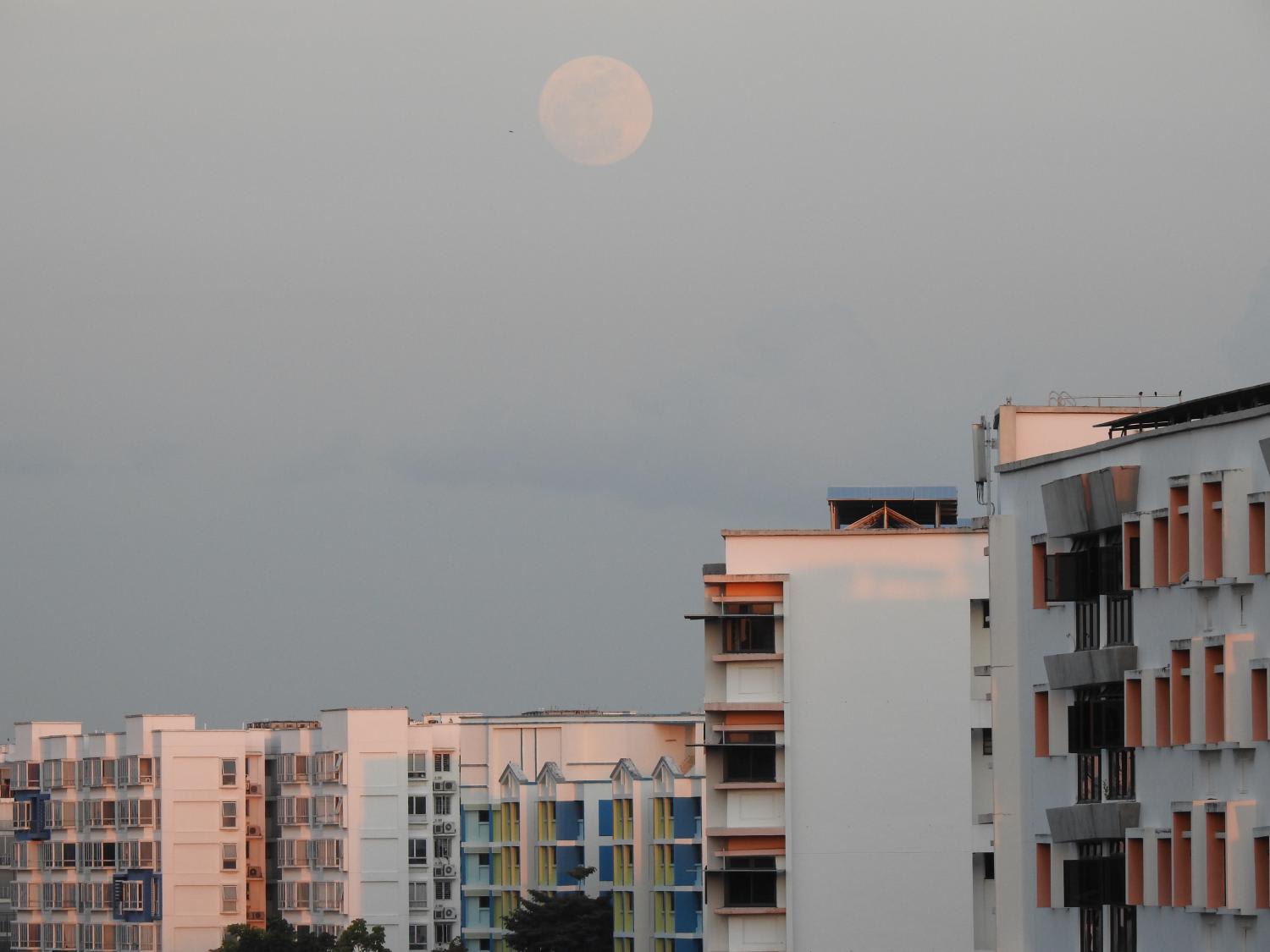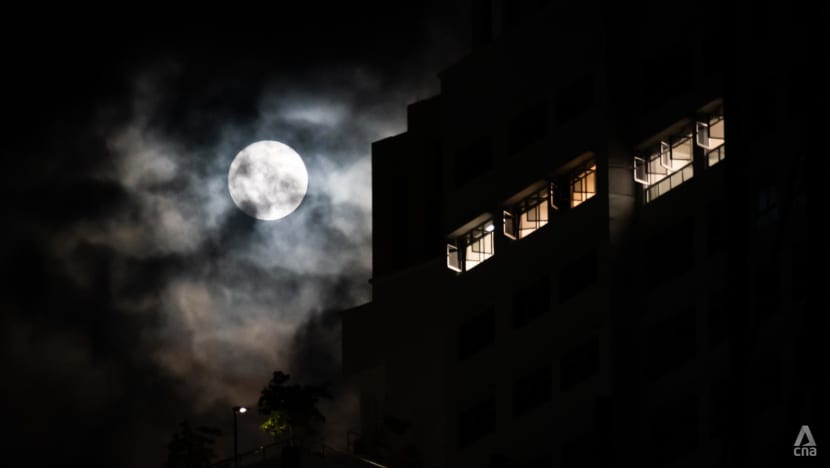Two supermoons, meteor showers to be visible over Singapore
In addition to the Sturgeon Moon and Blue Moon, stargazers can also catch the Delta Aquariids and Perseid meteor showers this August.

View of the supermoon over Singapore on Aug 11, 2022. (Photo: A Kannan)
SINGAPORE: Stargazers, mark your calendars.
In the month of August, two supermoons will be visible in Singapore, said the Science Centre Observatory on Tuesday (Jul 25).
And it's not just supermoon season - Singaporeans will also be able to catch a glimpse of two meteor showers in the next few weeks.
The supermoons, known as the Sturgeon Moon and Blue Moon, are two of four supermoons that will be visible in 2023.
Supermoons are a phenomenon that occurs when the moon’s orbit is closest to our planet, making the moon appear larger and brighter than usual, said the observatory.

SUPERMOON SEASON
The first supermoon, the Sturgeon Moon, will be visible on Aug 1, 2023.
It will be the second closest supermoon to our planet this year, after the Blue Moon, said the Science Centre Observatory.
The moon will begin rising at 7pm from the south-east and "should be at an appreciable height" from 9pm.
The Sturgeon Moon will continue rising until it reaches its highest point in the sky at 1am.
It will set at 7.25am on Aug 2.

Stargazers can catch the second supermoon, known as the Blue Moon, on Aug 31.
"The Blue Moon is expected to be the brightest and closest supermoon to the Earth this year," said the observatory.
Rising at 7.34pm from the east, the moon will reach a height easy for most to see from 9pm onwards.
The moon will reach its highest point at 12.51am and set at 7.03am on Sep 1.
How did the supermoons get their names?
The Sturgeon Moon, coined by Native Americans, was named after the large sturgeon fish.
"During this time of the year, it is believed that this fish is more commonly found in the Great Lakes and other major bodies of water in North America," said the observatory.
Despite its name, the Blue Moon is not blue in colour. The moniker came about due to the Blue Moon being the second full moon in a calendar month with two full moons - a rare sighting that happens every two to three years.
The last Blue Moon was seen on Oct 31, 2020.
However, there are instances where the moon has appeared to be blue, due to water droplets in the air, certain types of clouds or particles thrown into the atmosphere by natural catastrophes such as volcanic ash and smoke.
This was seen during the 1883 volcanic eruption of Krakatoa in Indonesia, when ash particles in the air scattered red light and acted as a blue filter, resulting in the moon taking on a blue appearance.
VIEWING TIPS
According to the observatory, both supermoons will be "easily visible anywhere in Singapore" as long as skies are clear and offer an unobstructed view.
Last month, fans and photographers caught a glimpse of the first supermoon of the year, the Buck Moon, in spite of an afternoon downpour.
For a better and "potentially elevated" view of the supermoons, visit open public areas like the Marina Barrage, East Coast Park and the Southern Ridges, said the Science Centre Observatory.
Even though equipment is not needed, the moon's appearance can vary depending on atmospheric conditions and the location.

METEOR SHOWERS
Astronomy lovers will also be in for a treat in coming weeks, with the Delta Aquariids and Perseid meteor showers making an appearance in Singapore.
Meteors come from leftover comet particles and bits from broken asteroids, according to the United States' National Aeronautics and Space Administration (NASA).
"Every year the Earth passes through these debris trails, which allows the bits to collide with our atmosphere where they disintegrate to create fiery and colourful streaks in the sky," said NASA.
The Delta Aquariids meteor shower will peak on Jul 30 and be most visible from 2am onwards.
But founder of the Stargazing Singapore hobby group, Ms Gerardyn Brittos, said it is considered a "small" event with hardly any visible meteors appearing over Singapore.
The Perseid meteor shower, on the other hand, will be one of the "most prominent and brightest" events when it peaks from 4am on Aug 12 and Aug 13.
It is "famous for producing a large number of bright meteors including fireballs", said Ms Brittos.
While no equipment is needed, she advised eager stargazers to face the north-east.
"Perseids can be observed in any open area like a park, beach, rooftop of an open multi-storey carpark or sky gardens with unblocked surroundings," she said.
"With or without the moon, it will not affect the visibility of the meteors as they are bright."















